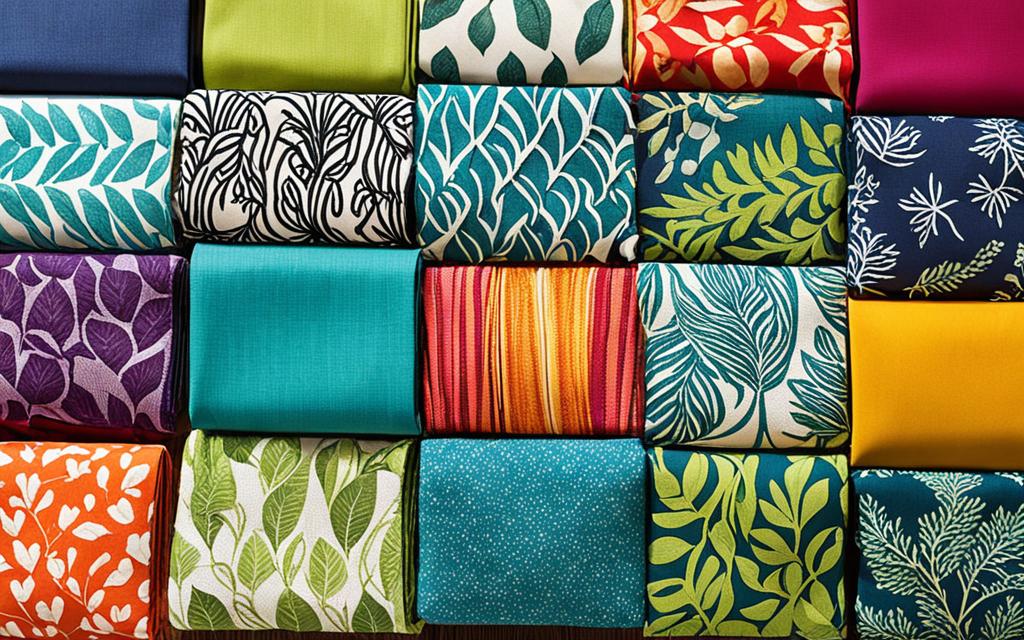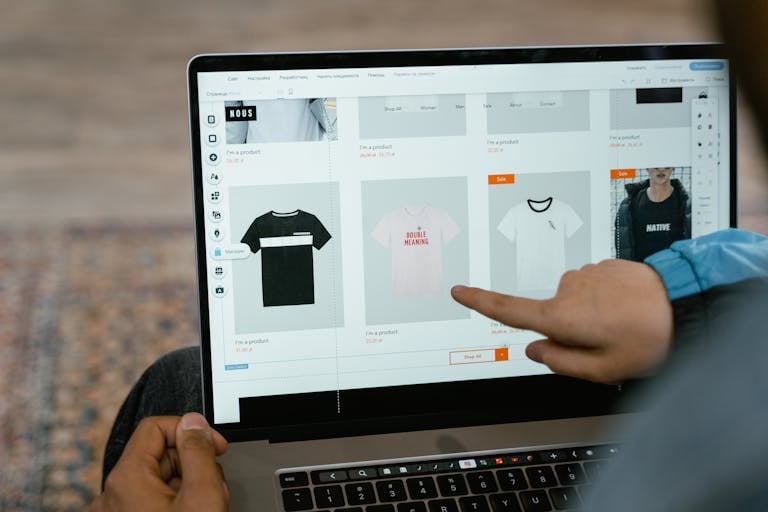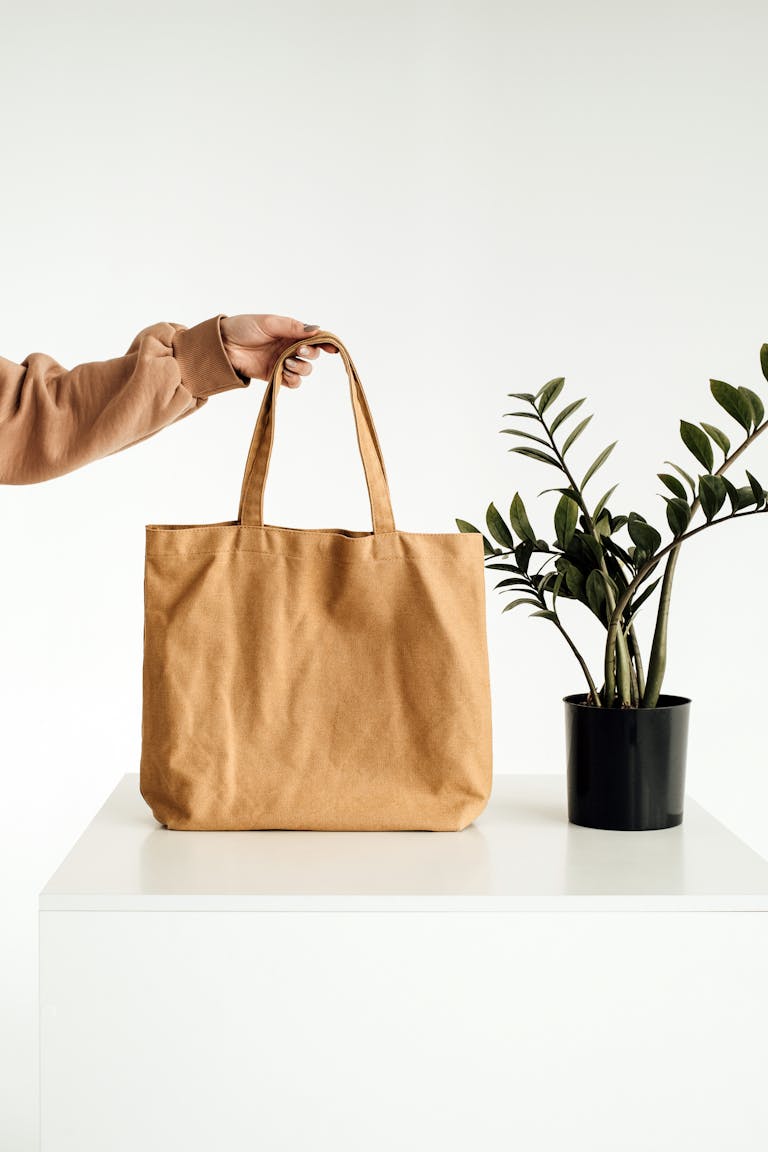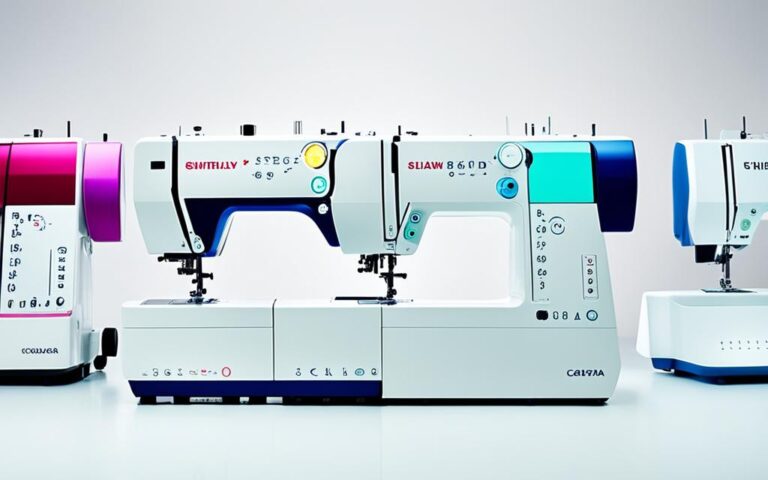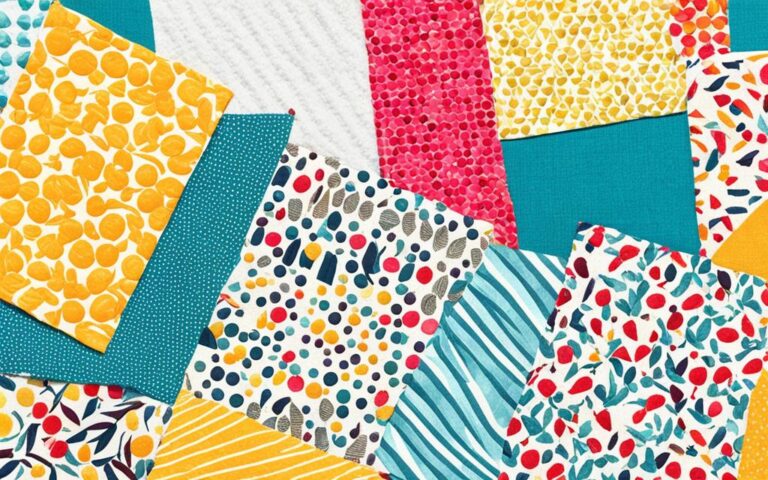Durable and Stylish Fabric for Bag Making | Expert Guide
Being a crafter for life, I find making bags truly enchanting. It’s incredible how you can turn fabric into a beautiful, useful accessory. The choice of fabric matters a lot, whether it’s for you or as a gift.
This guide dives into the top fabric for bag making. It covers everything, from canvas, the go-to for bags, to the luxury of leather. You’ll also get to know about synthetic fabrics such as nylon and polyester. Plus, there’s info on polypropylene non-woven fabric, denim, and synthetic leather. We’ll even show you how to pick the perfect lining fabric for your bag project.
If you’re an expert or just starting, this guide will help you. You’ll learn to choose the best fabric for your bag project. We provide detailed info on each fabric type. This will help you make bags that are stylish, durable, and mirror your special taste.
Key Takeaways
- Discover the most popular fabrics used in bag making, including canvas, leather, nylon, and polyester.
- Learn about the unique characteristics, advantages, and disadvantages of each fabric type.
- Explore the different varieties and grades of leather, nylon, and polyester for bag making.
- Understand the importance of choosing the right lining fabrics to complement your bag project.
- Gain insights from expert sources on selecting the ideal fabric for your next bag project.
Introduction to Fabrics for Bag Making
Bags are not just for carrying things; they show our style and meet our needs. This guide will teach you about the most common fabrics in bags, from hard-wearing canvas to the luxury of leather. You will also learn about natural and synthetic fabrics such as nylon and polyester. Each of these fabrics has its good and bad points. Knowing about them can help you pick the best one for your project. You’ll also find out which bag brands use these fabrics often.
| Fabric Type | Advantages | Disadvantages | Common Brands |
|---|---|---|---|
| Canvas | Durable, versatile, eco-friendly | Can stain easily, requires maintenance | Herschel Supply Co., L.L.Bean, Everlane, BAGGU |
| Leather | Luxurious, durable | Can be expensive, may require special care | Louis Vuitton, Coach, Michael Kors |
| Nylon | Lightweight, durable, water-resistant | Can be less breathable than other fabrics | Outdoor gear brands, sports bag manufacturers |
| Polyester | Affordable, UV-resistant, color-fast | May not be as durable as nylon | Business bag brands, backpack companies |
| Polypropylene Non-Woven | Lightweight, resilient, economical | Non-biodegradable, environmental concerns | Reusable bag brands, promotional bag makers |
| Denim | Stylish, durable | May be less formal than other fabrics | Casual bag brands, backpack manufacturers |
| Synthetic Leather | Eco-friendly, affordable | May not have the same luxurious feel as natural leather | Vegan bag brands, eco-conscious fashion labels |
This overview on fabrics for bag making will help you choose the right one for your needs. Whether you want durability, luxury, or green options, you’ll be ready. Learn about what makes each fabric special and how top bag brands use them.
Canvas: The Workhorse of Bag Fabrics
Canvas is a strong fabric usually made from cotton. It’s a top choice for making bags because of its durability, versatility, and eco-friendly features. Bags like weekenders or tote bags use canvas well. It can even be made water-resistant.
Advantages of Canvas
Canvas is great for bags because it lasts a long time and can take a lot of use. It keeps up well over time. This kind of fabric also supports the environment, being made from natural cotton fibers. What’s more, it’s easy to change the color or add designs. This means there are many design options for bags like backpacks.
Disadvantages of Canvas
But, canvas does have its challenges. It can stain easily and needs to be cared for often to stay looking new. Even though it may not keep water out as well as some non-natural fabrics, treatment can boost its water-resisting abilities.
Brands Using Canvas for Bags
Lots of famous brands use canvas in their bags because it’s both reliable and looks good. Herschel Supply Co., L.L.Bean, Everlane, and BAGGU are among these brands. They craft tote bags, backpacks, and more using canvas.
Leather: Luxury and Durability Combined
Leather is a top choice for many in the fashion world because it’s both durable and stylish. When it comes to making bags, you’ll often find cowhide and lambskin used. Cowhide is known for its tough nature, while lambskin feels softer and adds a more luxurious touch.
Types of Leather
There are several grades of leather, including full-grain, top-grain, split leather, genuine, and bonded leather. Each type has its own special qualities. This variety is great for bag makers because they can find something to meet different tastes and needs.
Grades of Leather
When we talk about leather grades, we’re referring to how high the quality is. Full-grain leather is the best quality, keeping the hide’s natural look and strength. Then there’s top-grain leather, which is polished to be smoother. Genuine and bonded leathers are more affordable but may not last as long or feel as luxurious.
Brands Using Leather for Bags
Brands known for their quality like Louis Vuitton, Coach, and Michael Kors often choose leather for their bags. They use leather for its timeless look and great durability. These companies have made a name for themselves by creating luxury bags that are not only stylish but also enduring.
Nylon: Lightweight and Durable
Nylon is a strong, man-made fabric that is great for making bags.
bag making
It comes in different types, each with its own special features.
Cordura nylon lasts a long time and doesn’t wear easily. It’s perfect for making tough backpacks, sports bags, and luggage. Ripstop nylon has tiny threads woven in. This makes it harder to tear and good for backpacks and school bags. Ballistic nylon was first used by the military. Now it’s used for strong luggage and bags that get rough use.
Nylon is known for being tough yet light. It works well for sports bags, backpacks, school bags, and luggage. So, whether you need a water-resistant bag or something lightweight, nylon is a good pick.
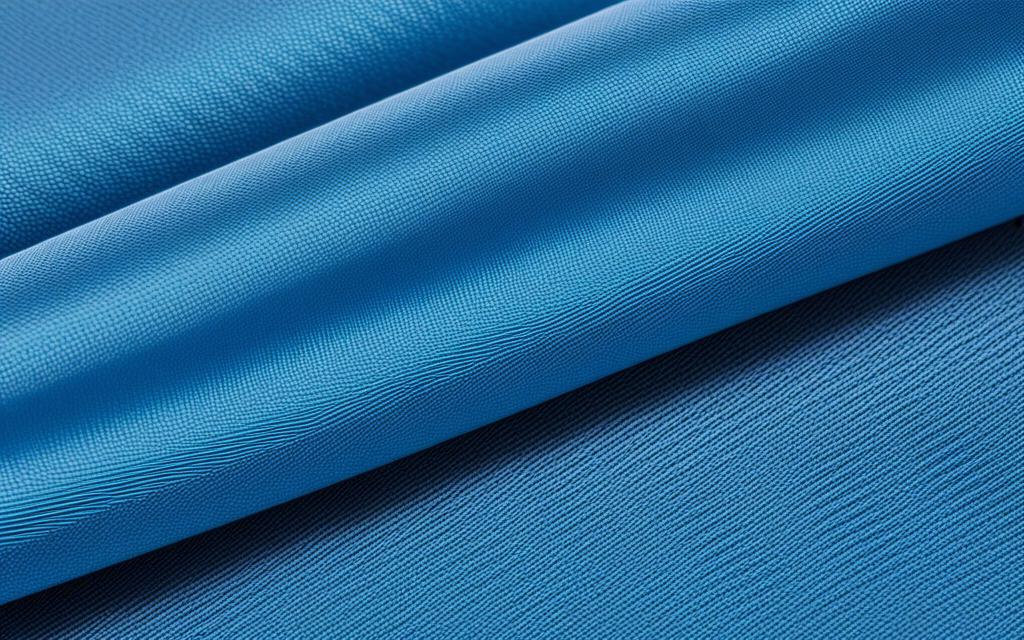
Polyester: The Versatile Synthetic
Polyester is a very versatile synthetic fabric. It has many types, such as Ripstop, Dobby, and Microfiber. Unlike nylon, polyester has ester linkages. This makes it tough against UV damage and hydrolysis.
This is why clothes made of polyester keep their colors well. It is also more affordable than nylon but still high quality. That’s why it’s great for things like business bags and backpacks.
Polyester vs. Nylon
Nylon and polyester are both synthetic. But, they are different in how they’re made. Nylon is usually tougher and more flexible. This makes it perfect for items needing strength and flexibility.
Polyester, however, is good at protecting against the sun. It also keeps colors from fading. So, it works well for many bag types too.
Advantages of Polyester
- Stays colorful and doesn’t fade easily
- Protects well against the sun
- It’s cheaper than other synthetic fabrics
- Comes in lots of textures for different uses
- Used in many bag types, including business and sports bags
Disadvantages of Polyester
- Not as strong or flexible as some other fabrics
- Can create static electricity
- Not as good at letting air through as cotton is
- Some types are not as durable as other synthetics
Polypropylene Non-Woven Fabric: Economical and Resilient
Polypropylene Non-Woven Fabric (PP Non-Woven) is special for making bags. They are light yet strong, perfect for shopping and promo bags. It’s not like the usual fabrics. Non-woven fabrics are made by locking fibers together. They look and feel like felt.
Advantages of PP Non-Woven
PP Non-Woven is very versatile and budget-friendly. This is because it’s made in a simple way. It costs less than other fabrics. That’s why it’s in a lot of shopping bags, like the ones at Whole Foods. They are light, stay strong, and keep moisture out. This makes them great for everyday use.
Disadvantages of PP Non-Woven
But, it’s not all good news. PP Non-Woven doesn’t break down on its own. This is a problem for the environment. Although it’s strong and cheap, its lack of green features worries many people.
Applications of PP Non-Woven
PP Non-Woven is a favorite for many bag types. It’s often used in bags you use again and again, or in bags that are given out for free. These bags are light, tough, and keep water away. This makes them a popular choice. Yet, the debate over their impact on the environment continues.
Denim: Stylish and Casual
Denim is made from cotton and is widely loved for its style and strength. It comes in many types like Raw, Selvedge, and Vintage. These types are good for making casual bags like day bags, backpacks, and purses. Denim is seen as not very formal, but it’s easy to find, cheap, and great for daily use.
Synthetic Leather: Eco-Friendly and Affordable
In the realm of artificial alternatives to natural leather, synthetic leather, or vegan leather, offers a more affordable and eco-friendly option. There are two primary varieties of synthetic leather: PVC (Polyvinyl Chloride) and PU (Polyurethane) leather.
PVC Leather
PVC leather, characterized by a versatile plastic layer, provides manufacturers the advantage of creating more embossed textures, but it is currently under scrutiny due to environmental and health concerns. PVC leather’s plastic-based composition can make it less breathable and less durable compared to other synthetic leather options.
PU Leather
PU leather, made by coating a fabric such as polyester with a flexible polymer, is lauded as a more eco-friendly and softer synthetic leather option. The PU leather manufacturing process typically involves fewer harsh chemicals, making it a more sustainable choice for vegan leather and faux leather enthusiasts. Additionally, PU leather is known for its water-resistant properties, making it a practical choice for various bag-making needs.
Each type of synthetic leather holds unique properties, allowing them to cater to distinct bag-making needs. Whether you’re looking for an affordable and eco-friendly alternative to natural leather or a specific material with desired characteristics, the world of synthetic leather offers a diverse range of options to explore.

Fabric for Bag Making: Choosing the Right Fabric
Choosing the right fabric for a bag matters a lot. It’s about finding the right mix of what it looks like and how well it works. Think about how often and when you’ll use the bag, what it should hold, and if it’s for daytime or evenings.
Fabrics are divided into three main groups based on their weight: apparel, quilt, and home decor. It’s common to use a mix of these to give a bag the perfect feel and support. Popular choices for bags are leather, decorator weight, tweed, canvas, and fabrics like Robert Kaufman Essex Linen. Adding interfacing and linings helps make your bag sturdier.
| Fabric Type | Characteristics | Best Applications |
|---|---|---|
| Leather | Durable, luxurious, and long-lasting | High-end bags, totes, and evening bags |
| Decorator Weight | Sturdy, structured, and suitable for home decor | Tote bags, travel bags, and structured handbags |
| Tweed | Textured, durable, and adds visual interest | Casual bags, backpacks, and day bags |
| Canvas | Rugged, versatile, and easy to work with | Tote bags, grocery bags, and everyday carry-alls |
| Mid-Weight Woven | Balanced weight, durable, and easy to sew | Handbags, shoulder bags, and lightweight travel bags |
When picking a fabric, think about what you need your bag to do. Your choice should match how you plan to use the bag and what you want it to look like. This way, you’ll make a bag that works great and looks good too.
Lining Fabrics: The Inside Matters
The inside of your bag can be just as exciting and useful as the outside. You might choose a plain cotton lining, or maybe you want to brighten things up. Waterproof fabrics like PU-coated nylon are perfect for keeping makeup and toiletries safe. They’re easy to clean and shield the outside fabric from spills. Craft/quilting cotton is also a top lining choice. It’s cheap, light, and comes in many colors and designs. Depending on the bag’s weight and use, it might need strengthened lining for extra durability and strength.
Waterproof Lining Fabrics
Makeup bags and toiletry bags can benefit from a durable lining fabric. PU-coated nylon and Cordura lining materials are great for this. They’re simple to clean and prevent leaks from ruining the bag’s exterior.
Cotton Lining Fabrics
Cotton lining is both a timeless and smart choice. Craft/quilting cotton is easy to find and easy on the budget. It gives a lightweight but strong interior. Plus, you can pick from a wide range of colors and patterns for a fun surprise lining.
Conclusion
This guide gave you a detailed look at the top fabrics in bag making. You now know about canvas, leather, nylon, and polyester. It covered what makes each fabric special and when it’s best to use them.
Now, you’re ready to choose the ideal fabric for your next bag project. Think about what you want your bag to be – stylish and durable or maybe something eye-catching and practical. Pick the right fabric to bring your creative vision to life.
There are many versatile fabrics out there, from green options to high-tech choices. With this expert guide, you have what you need to pick the perfect fabric for your bag making. Your bags will not only look good but also last through everyday wear and tear.

